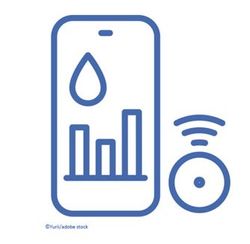© 2025 MJH Life Sciences™ , Patient Care Online – Primary Care News and Clinical Resources. All rights reserved.
New Guidelines Recommend Preconception Screening in Diabetes, Universal Testing for Primary Aldosteronism
ENDO 2025: The publications reflect growing consensus that integration of endocrine screening into standard clinical workflows is essential for early risk detection and long-term disease prevention.
New clinical practice guidelines released at the Endocrine Society’s ENDO 2025 meeting emphasize the critical role of proactive screening in preventing adverse health outcomes in 2 high-impact endocrine conditions: preexisting diabetes in pregnancy1 and primary aldosteronism.2 Both guidelines highlight that earlier identification through routine clinical screening could reduce morbidity and lead to more targeted, effective interventions.
Ask About Intent to Conceive
In a joint guideline from the Endocrine Society and the European Society of Endocrinology, experts call for systematic preconception screening in all women of reproductive age with diabetes, regardless of care setting. The document recommends clinicians “ask all women with diabetes of reproductive age about intent to conceive at every reproductive, diabetes and primary care visit” to ensure timely access to preconception care. The guideline is co-sponsored by the American Diabetes Association and several other national and international organizations and was published in the Journal of Clinical Endocrinology & Metabolism and the European Journal of Endocrinology.1
The guideline includes specific recommendations around delivery timing, medication management, and the use of diabetes technology. Pregnant individuals with diabetes should be considered for delivery before 39 weeks, given that “the risks associated with continued pregnancy may outweigh those of early delivery.” Clinicians are advised to discontinue GLP-1 receptor agonists before pregnancy and avoid metformin in pregnant individuals with preexisting diabetes already on insulin. For patients with type 1 diabetes, the guideline supports the use of hybrid closed-loop insulin delivery systems during pregnancy. In addition, the document suggests that women with diabetes use contraception until they are ready to become pregnant.1
“We developed these guidelines as diabetes rates are rising among women of reproductive age and very few women with diabetes receive proper preconception care,” Jennifer Wyckoff, MD, clinical professor of internal medicine at the University of Michigan, said in a statement. “In addition to preconception planning, the guideline discusses advances in diabetes technology, delivery timing, medications and diet,” added Wyckoff, who chaired the guideline writing group.1
“Given the increase in type 2 diabetes associated with obesity worldwide and women with this pathology who become pregnant, these recommendations have also addressed the issues related to correct nutrition and therapeutic approach in such women,” guideline co-chair Annunziata Lapolla, MD, associate professor of endocrinology at the University of Padova, in Veneto, Italy, noted.1
Screen for Primary Aldosteronism
A separate guideline released at the same meeting calls for expanded screening for primary aldosteronism, a frequently underdiagnosed cause of hypertension. Primary aldosteronism is estimated to affect 5% to 14% of people with high blood pressure seen in primary care and up to 30% of those seen in referral centers. Despite this prevalence, most individuals with hypertension are never tested for the condition.2
“People with primary aldosteronism face a higher risk of cardiovascular disease than those with primary hypertension,” Gail K Adler, MD, PhD, chair of the guideline writing group and professor at Harvard Medical School, said in a statement. “With a low-cost blood test, we could identify more people who have primary aldosteronism and ensure they receive the proper treatment for the condition.”
Guideline authors recommend that all individuals diagnosed with hypertension undergo laboratory screening for aldosterone, renin, and potassium levels. THe writing committee suggested vs strongly recommended universal screening because of the potential for false-positive test results. When the condition is diagnosed, primary aldosteronism should be managed with treatments specific to the condition, including mineralocorticoid receptor antagonists or adrenalectomy in selected cases.2
The guideline will appear in the September 2025 print issue of The Journal of Clinical Endocrinology & Metabolism. The guideline updates recommendations from the Society’s 2016 guideline on primary aldosteronism.2
Both guidelines underscore the importance of shifting from reactive to proactive endocrine care. Routine screening in primary and specialty settings, whether for reproductive planning in diabetes or for identifying a secondary cause of hypertension, can uncover modifiable risk factors and prevent avoidable complications such as miscarriage, preterm birth, cardiovascular events, or kidney disease, the 2 guidelines together suggest. They also point to the value of integrating endocrine screening into standard clinical workflows to increase early risk detection and long-term disease prevention.
References
Experts suggest screening women with diabetes for intent to conceive at every doctor visit. News release. The Endocrine Society. July 13, 2025. Accessed July 15, 2025. https://www.endocrine.org/news-and-advocacy/news-room/2025/experts-suggest-screening-women-with-diabetes-for-intent-to-conceive-at-every-doctor-visit
Endocrine Society guideline calls for increased screening for common cause of high blood pressure. News release. The Endocrine Society. July 14, 2025. Accessed July 15, 2025. https://www.endocrine.org/news-and-advocacy/news-room/2025/endocrine-society-guideline-calls-for-increased-screening-for-common-cause-of-high-blood-pressure
Related Content:



